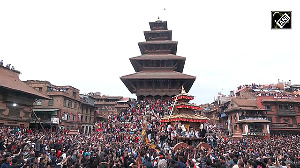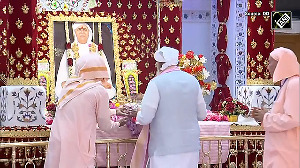Rampant use of poor quality oil, banned toxic food colours and flavours, boiled potatoes in 'gulab jamuns,' and peas in 'pista burfis' and synthetic milk products could cheat consumers of wealth as well as health this festival season, experts have warned.
Sweets coloured bright pink, green and yellow look attractive and fascinate the public, but the colours used in such sweets are mostly harmful for human consumption. These cheap artificial colourings used food items like rasgulla, laddoo, jalebi, burfi, chum-chum, karachi halwa and many more can be deceiving and send one straight to a doctor, according to Dr Rupa Bakhshi, professor at Punjab Agricultural University.
Toxic colourings are being used as these are easily available, comparatively cheap and above all look attractive and fascinate buyers, especially children. But they could be carcinogenic. Toxic effects of these colours may include diseases like paralysis, brain damage, vomiting, diarrhoea, giddiness and food poisoning, she warned.
Many times valuable components are removed from the food and prohibited items are added to it for making money. Customers need to be extra careful during the festival season, as the demand for sweets increases during this time and the consumer could easily be cheated, she cautioned.
To make matters worse, the poor hygienic conditions in which most of the sweets are mass-manufactured to cater to the Diwali demand, could take a toll on the consumers' health. Consumer is not only cheated of his money's worth but adulterants are a big health hazard, she adds.
Recently, use of refined oil was detected in the 'only pure ghee'-graded
While buying milk and milk products, consumers should ensure that the products they are buying are fresh with good flavour and have good body and texture. They should preferably buy those milk products, which do not contain artificial food colours.
According to Dr Bakhshi, to avoid such adulteration housewives can go back to good old days of making simple sweetmeats at home using natural colouring matter derived from various fruits, vegetables and spices.
For example, green can easily be produced with the use of spinach, red with beetroot, and yellow from saffron.
Otherwise, natural off-white-coloured sweets made from milk and milk products are best to consume and one can avoid artificial colour intake. Besides, sweets produced at home are hygienic, clean and safe, said the home scientists.
Milk is commonly adulterated with water and may even be contaminated with urea, vanaspati and starch, they said.
During the festival season, especially during Diwali, demand for khoya and chhena (cottage cheese) increases and many corrupt shopkeepers and sweetmeat manufacturers add starch and synthetic material. This type of cottage cheese will be hard at room temperature and will not be smooth and creamy after mashing.
"One can easily detect starch by adding few drops of iodine in the product and if the colour of the food product changes towards blue, it depicts the presence of starch in the product."






 © 2025
© 2025